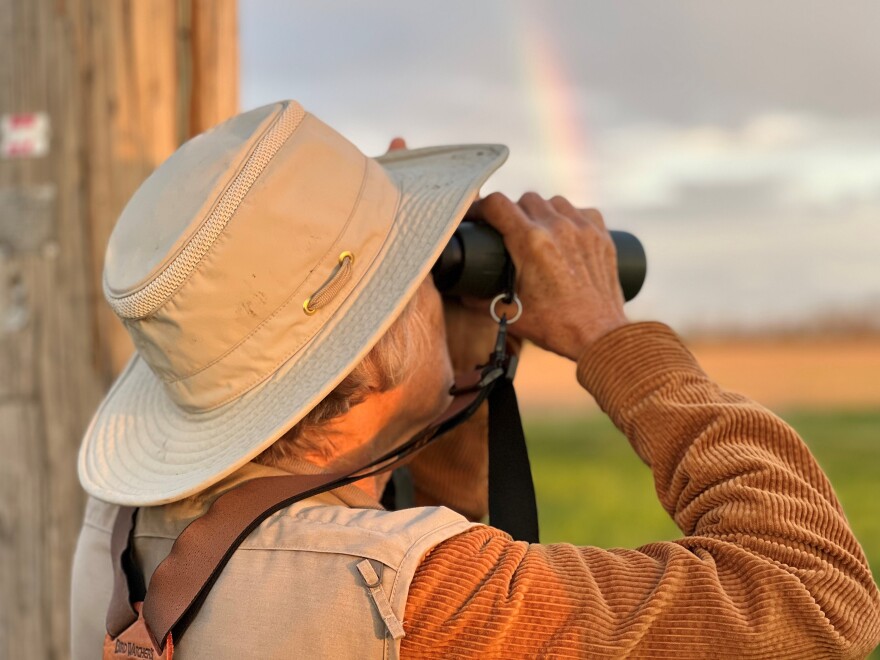The birds awake before the sun on Saturday morning.
Chirping melodies to fading stars, they’re recognizable by song long before it’s light enough to make out their shapes against the sky.
“I think that's a Redwing calling back there,” Susan Brauning says, tilting her ear to the sky. “And there's a field sparrow that sounds like a ping pong ball dropping.”
As the sun rises over a field at Battelle Darby Creek Metro Park in Columbus, Brauning identifies song sparrows and robins, blue jays and starlings.

But she’s listening for one bird in particular: the sandhill crane.
“They're unmistakable when you hear them,” says Jen Kuehn, another volunteer birder. In the absence of any real life examples, she plays a recording of the crane’s call on her cell phone.
It sounds like it belongs in Jurassic Park, and it almost does. Sandhill cranes are among the oldest bird species on the planet. One fossil dates back 2.5 million years.
They faced extinction, too, in Ohio at least.
But recently, that’s changed and it’s what brings Kuehn and Brauning to this metro park at 6:30 on a Saturday morning.
The Annual Midwest Crane Count and it’s history in Ohio
The women are two of hundreds of volunteers across Ohio scanning the horizon for sandhill cranes during a two hour window as part of the Annual Midwest Crane Count.
The International Crane Foundation has hosted this event for 47 years in an attempt to monitor and track the species across the upper Midwest.
But this is just the third year Ohio has taken part.
That’s because – even though sandhill cranes are native to this state – they were completely pushed out in the 1930s.
“Sandhill cranes were not protected, so they were overharvested,” said Laura Kearns, a wildlife biologist with the Ohio Department of Natural Resources who specializes in birds.

Sandhill cranes only recently started making a comeback here. After they were wiped out of the state, the first new nest was found in the 1980s.
“But even in the mid-1990s, we only had fewer than 10 breeding pairs,” Kearns said.
Now, she estimates there could be up to 60 breeding pairs here. They inhabit wetlands across the state, from Pickaway County south of Columbus to Williams County in the far northwest corner.
Kearns attributes their resurgence both to international protections for migratory birds and to the successful restoration of wetlands in Ohio.
“The protection, restoration and management of wetland habitats has been a key part of them coming back into the state,” she said.
The importance of restored wetlands
Battelle Darby Creek Metro Park, where Brauning and Kuehn are searching for cranes, is a perfect example of that.

A century ago, the area was drained for farmland.
“There was drainage tile put in which would drain the water off and allow farmers to plant out here,” said Jen Moore, a naturalist for the park.
When the Metro Parks acquired the land, workers ripped out those tiles, restoring the wetlands which eventually led to dozens of species of birds coming back to the area.
Just two weeks ago, a pair of sandhill cranes were spotted noisily flying over.
“Last year, when we did this, it was way out at the edge of the field,” Brauning says, binoculars pressed to her eyes.
This year though, Brauning and Kuehn aren’t as lucky. The sandhill cranes remained out of sight during the scant two hours of the crane count.
But they weren’t upset.
They know the data they collect will help policy makers protect the bird into the future, so that next year, their chances of finding one will be even better.


